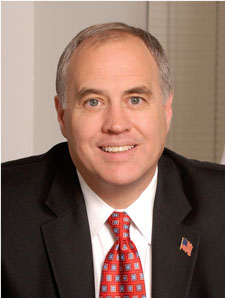 Membership in the New York State and Local Employees' Retirement System is broken down into two categories: mandatory and optional.
Membership in the New York State and Local Employees' Retirement System is broken down into two categories: mandatory and optional.
When you begin working for a public employer (state, county, city, town, village or school district), membership in ERS is mandatory for all full-time permanent 12-month employees. And while there are many benefits to joining the retirement system (i.e. death benefits, service retirement, disability retirement for both on-the-job and non job-related disabilities), as long as you are considered part time by your employer, membership is optional.
If you are an ERS member and you are required to contribute, it is important to ensure that your employer is taking the correct contributions from your earnings, otherwise you will end up owing the contributions that should have been taken with 5 percent interest compounded annually. (This is exactly the amount of interest your contributions would have earned had they been deducted correctly.) It's a good idea to check your pay stub to ensure that the proper deductions are being taken by your employer.
Each of the six tiers has a different set of rules governing contribution amounts, so it's also a good idea to consult your plan booklet to determine how much you should be contributing and for how long.
Once you join ERS, you cannot end your membership while you are working for a participating public employer — even if it was optional for you to join. However, if you terminate your employment, you can request a refund of your contributions and end your membership by filing a Withdrawal Application (RS5014). You must be off the payroll for at least 15 days, and have earned less than 10 years of service credit. Remember, if you end your membership, you will not be eligible for any ERS benefits.
If you have five or 10 full years of service credit, depending on your tier, you are considered vested, and when you reach the appropriate age, you can file a retirement application. Contact us before filing a Withdrawal Application.
If you are not vested and you do not withdraw your membership, your contributions will continue to earn interest for up to seven years from your last day on payroll. If you have not claimed your contributions after the seven years, they will be deposited into a non-interest bearing account until you claim them.
For more information on membership status or contribution rates, you can read Membership in a Nutshell, available on our website at www.osc.state.ny.us/retire/publications/vo1878.php.
Every month state Comptroller Thomas P. DiNapoli, sole trustee of the New York State and Local Employees' Retirement System, provides information on the system, which delivers retirement benefits to many NYSUT School-Related Professionals and other support staff. If you are an ERS member with a question of general interest, email united@nysutmail.org.
For immediate assistance, contact the ERS Call Center toll-free at 866-805-0990, or 518-474-7736 in the Capital District area.
For Your Benefit
RETIREES LIFT STATE ECONOMY
During 2014 alone, retirees of the New York State and Local Employees' Retirement System (NYSLRS) were responsible for $12 billion in economic activity in New York state, according to statistics compiled by the retirement system.
Of the 430,308 current NYSLRS retirees and beneficiaries, 78 percent continue to live in New York state — and pay state property taxes. In 2014, NYSLRS retirees paid $1.6 billion in real property taxes, 5 percent of the total collected in New York.
For more information, or to see the full report, visit www.nyretirementnews.com.
WAGE GAP CONTINUES IN RETIREMENT
A new report compiled by Financial Finesse shows women face obstacles due to their gender that make preparing for retirement more difficult. According to the "2015 Gender Gap in Financial Wellness" report, factors include lower lifetime income, longer life expectancy, fewer savings, and higher overall retirement and healthcare costs.
To quantify the gender gap, the report looks at the median working American today and projects how prepared that worker will be to retire at 65. Using figures including the median annual income (men make about $8,000 more); estimated retirement savings (men save almost $21,000 more) and estimated health care costs in retirement (about $20,000 more for women) the report found a 26 percent savings gap between the sexes in what is needed for retirement.
The report did find, however, that women are making progress in closing the gap by becoming more fiscally literate. To see the full report, visit www.financialfinesse.com/research-best-practices/2015-gender-gap-in-financial-literacy.